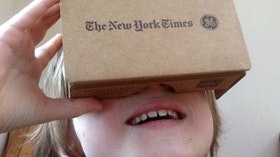Homepage
•
Learning Library
•
Blog
•
Virtual reality in the classroom just got affordable
Expand breadcrumbs
Expand breadcrumbs
- Learning Library
- Blog
- Virtual reality in the classroom just got affordable
- Homepage
- •
- Learning Library
- •
- Blog
- •
- Virtual reality in the classroom just got affordable
Virtual reality in the classroom just got affordable
By Maureen Yoder
November 27, 2015








